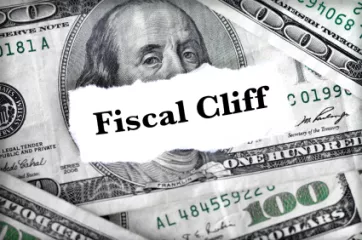- | Government Spending Government Spending
- | Data Visualizations Data Visualizations
- |
What Congress Gave Us in the Fiscal Cliff Deal
The president signed into law the fiscal cliff bill, also known as the American Taxpayer Relief Act of 2012 (H.R.8) on January 2, 2013. This week’s chart shows net spending and revenue effects of the bill.
The president signed into law the fiscal cliff bill, also known as the American Taxpayer Relief Act of 2012 (H.R.8) on January 2, 2013. This week’s chart shows net spending and revenue effects of the bill.
According to the Congressional Budget Office, the fiscal deal adds $332 billion in new direct spending over ten years. The deal also contributes $620 billion in additional revenue, as reported by the White House and members of Congress. As a result, the cumulative deficit over ten years is $6.9 trillion.
In addition to inflating the deficit, the fiscal cliff deal does nothing to address our unsustainable spending problem. While the deal may have relieved a short-term political impasse, it fails to deal with the country’s long-term debt driven by the excessive spending on programs like Social Security and Medicare.
Data note: All data are based on CBO and Joint Committee on Taxation scores for H.R. 8 versus current law. Additional revenue figures are from the White House document “Deficit reduction in the American Taxpayer Relief Act of 2012” and cross-checked with various sources that report amounts varying from $618 billion to $620 billion in additional revenue. Additional spending figures are from the CBO’s “Estimate of the Budgetary Effect of H.R. 8, The American Taxpayer Relief Act of 2012.” The cumulative deficit figure is calculated by weighing the changes in revenue and spending against CBO’s March 2012 baseline scenario.



